Southport Village Voices
An E-Magazine by & for the Residents of Southport
Number 78, August 2016
|
|
| |
Middle Bay, Harpswell, Maine Photo: David Kapp
|
| |
|
|
|
|
|
|
|
|
My Maine
|
We are just wrappping up a too-short vacation in Harpswell, Maine. It was literally 'hell on wheels' to negotiate the mid-summer Saturday traffic madness of the Boston metropolitan area to get here, and I wondered, more than once, "Why did I cross the bridge?" But, of course, Maine is worth it.
Just southeast of Brunswick, Harpswell is a conglomeration of peninsulas and islands surrounded by the waters of Casco Bay. Its rocky nooks and crannies add up to 220 miles of shoreline -- the most of any town in the US. Parts of the town feel more like the 19th century than the 21st, and you can get an ice cream sundae at the Orr's Island Candy Store for $3.85.
On the shores of Middle Bay, the only 'noise' we hear is the soft putt-putt of lobster boats -- and the birds. It's hard to take your eyes off the view, sunsets seem to go on forever, and there's a resident bald eagle. There's no heated pool, just the chilly water off the dock, sometimes daunting but always exhilarating. And there's no television (but there is wi-fi for those of us who need to check in with the 'real world' now and then). It's a good idea to bring books and games.
The cottage where we stay is said to have started as a fishing shack about 100 years ago; it's 'bigger and better' now, quintessentially Maine, improved without erasing its age and character. But perhaps the best thing about it is the long history we have of sharing it with the friends who introduced us to this special part of the world. Memories of lobster dinners and cocktail hour conversations are a big part of why we come back.
We'll return to Cape Cod soon, another place with many happy memories of vacations past, grateful for life's beautiful experiences.
_____________________________________
Share Your 'Summer' Story or Poem
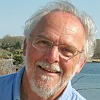
Do you have a special 'summer' memory or poem to share with SVV readers? If so, I'd like to include it in an 'end-of-summer' issue of Southport Village Voices.
If it's a story, 300 words would be about right. Pictures are always good. Please send your story or poem to me by Wednesday, August 24. Thanks.
|
|
 |
|
|
|
SOUTHPORT PROFILE
Alan & Denise Judelson
an interview with Ernest Ruber
|
 |
|  |
Denise & Alan with their family
|
"Hola, my name...Jose Jimenez," he says by way of greeting. (Now you know something about Alan Judelson, but there's more to tell.)
He was born in Chicopee Falls, MA.
His father worked in Holyoke for a company that sent him to Alabama, where his primary duty was to prevent employees from unionizing by giving them anything they asked for. Among other things, he supplied company uniforms to the white baseball team. But a year later, when he supplied uniforms to the company's black baseball team as well, a new boss in the home office asked him why he was "wasting the company's money" on baseball uniforms -- and fired him.
The family moved to New Haven, CT where his father had teamed up with a partner to form a restaurant supply business, which Alan later joined. "By the time we were done," he says, "we supplied everything but the location, food and customers."
|
|  | |
Alan graduated from the US Naval Academy in 1966.
|  |
Alan attended New Haven public schools and went on to graduate from the US Naval Academy at Annapolis in 1966, "on your dime, thank you very much for that." Afterward, he did six and a half years of active duty, including three nine-month tours aboard ships off the coast of Viet Nam, and an abbreviated tour as an advisor to the Vietnamese Navy.
He spent nine months at the Defense Language Institute in Monterey CA, learning the Vietnamese language and graduating second in his class. "My earlier study of Hebrew helped a lot," he says, "since I was already accustomed to a language that was very different from English." He became fluent in Vietnamese and two other languages. "My brain seems to have great storage capacity," he says, "my mind is a junkyard of information."
 |
|  |
Denise earned her nursing degree in
1967 from Los Angeles City College.
|
Denise was born in Los Angeles, where her parents had settled in the late 1930s. She met Alan when he was in the Navy -- "through a shipmate who thought we should meet." A good example of unintended consequences. She earned her nursing diploma at Hollywood Presbyterian School of Nursing and an Associates Degree in Nursing from Los Angeles City College in 1967. She went into pediatric nursing in California and continued later in Connecticut in the Newborn Intensive Care Unit at Yale, and then worked for 27 years as a school nurse. Connecticut winters were a bit shocking coming from California, and winter is still not Denise's favorite season. She concedes though that "walking on a cold snowy day can be beautiful."
Alan enjoyed the Navy, but separation from his family was painful and led to communication disconnects. On returning home after his second tour, Alan's two-year-old son led him to a photograph and referred to it as "Daddy." Having his son mistake a photograph for the real thing was enough; he told the Navy he was ready to resign. A year and a half later, they allowed him to do so.
He was offered sales jobs, but decided that working with his father as his boss would be preferable. "That was the second best decision in my life," he says, "marrying Denise was first." Connecticut's insurance and military weapons industries had made it recession-proof for years, but then the Cold War ended and the Foxwoods Casino moved in. Employment declined and many people opted to spend their money on slot machines instead of taking the family out for dinner on the weekend. Restaurants began to fold and restaurant supply businesses with them.
"Our company had been doing very well," Alan says. "We had 21 employees with an average tenure of 19 years. I couldn't just fire them." So he spun off several divisions as independent companies and kept the design business, running it himself until he and Denise moved to Southport.
Alan did the space planning, architectural level mechanical drawings, equipment selection and wrote the specifications, mostly for public school kitchen/cafeteria facilities. "I'm good at jigsaw puzzles," he says. "I asked employees what they wanted, negotiated space and budget with administrators, and gave them what they needed." School buildings have a working life of about 50 years, so he planned with that in mind, often anticipating and including items that people didn't know they would need. "My most satisfying moments were when I came back after the facility was up and running and someone would say to me, "I found that I needed a faucet here, and there it was. Thank you!"
Much of the work was state funded, so there were years when, in order to balance its books, the state would delay paying its bills until the next fiscal year. "After one such year, a lot of money arrived early in a new fiscal year. I was driving a car with 180,000 miles on it and decided to treat myself to a little blue 2004 BMW convertible. My cousin bought the same car and he now has about 200,000 miles on his; I have about 38,000 miles on mine."
Alan stays busy. He is, of course, on the Board of Governors and he expects that his expertise in solving space jigsaws will be useful in making decisions on how best to use space in the Village Center. "We are working on establishing continuity on the board," he says. "[President] Dan Riley does a frightful amount of work."
In his leisure time, Alan has also learned to blow glass; he offered a short exposition of the challenges and showed me a small collection of his fragile achievements. I'm not going to try it. He builds model ships, too, and has constructed one from a 1966 kit (with directions in Italian). It was a bargain at $25 and only took him three years to complete. Before coming to the Cape, he built an 8' sailboat with a broomstick for the mast and lacking a jib. He refers to it as a "floating weather vane." And he's even made an all-wood clock-work (that doesn't quite work yet). In less than a year he has turned himself into a good pool player.
 |
|  |
Denise with a quilt in progress.
|
Denise is a quilter. She showed me a quilt she's done in a historical pattern that dates to the slavery era in America. When such a quilt was hung outside a home with the pattern in one orientation, it was safe for runaway slaves to come into the house; if hung in the opposite orientation, it wasn't safe. Denise also does water aerobics, walks the golf course path and is learning to play Mah Jongg.
Denise and Alan have three adult children and four grandchildren. Andy, a physician, and his wife Lisa, a speech pathologist, live in Sandwich. Lisa was very helpful when the Judelsons were looking for a home on Cape Cod, providing them with information about Southport. Their daughter Rachel lives in Boston and is an interpreter for people who are deaf. Their younger son Dan, an exercise physiologist with Nike, lives in Oregon with his family.
After living in Connecticut for 42 years, the Judelsons moved to Southport three years ago to be nearer to family members. They love their home here and the ease with which one can make new friends. When they were brand new, for example, they saw a notice in the Information Room saying that someone needed a ride to Falmouth. They responded and met Derek and Jean Little. By far, they say, the best things about Southport are the sense of community, the great activities and the friendly people. "Our community," Alan says, "is a work in progress, not perfect yet but a fine place to live."
|
|
Some People Don't Know
by Sheila Handler
|
Some people don't know
they're in paradise.
They forget to sweep
the dust and cobwebs
from their early dreams.
They do not polish
the silver tarnished
by their errant ways,
and fail to see the
needy child in pain,
pleading by their door.
Their garden grows weeds
that cry to be pulled
as they aimlessly
trample the flowers
I wish I could pick.
|
Southporters In The Community
Roy Reiss: PA Announcer for the Cotuit Kettleers an interview with Andy Jablon
|
|
|  | |
Roy Reiss on the job, overlooking Lowell Park, Cotuit's "Field of Dreams."
|  |
On a warm summer evening...
one of the best things you can do on the Cape is to take in a Cape Cod League baseball game. There are 10 teams in the league, and Southporters are lucky to be close to Lowell Park, where the Cotuit Kettleers play. Arriving at the field is like stepping back in time. Located in the beautiful village of Cotuit, Lowell Park is nestled in a wooded area close to the water, a classic baseball field. Admission is free. Fans fill the bleachers on each side of the field and behind the backstop cage and sit scattered along the outfield fences on beach chairs. Kids play catch with their friends. Major league scouts occupy a space reserved for them behind home plate. It's a beehive of pre-game activity. But precisely at 5:00 o'clock, over the loudspeaker, fans are greeted by, "Good afternoon ladies and gentlemen, boys and girls. Welcome to Cape Cod's field of dreams -- beautiful, picturesque, pristine Lowell Park, for today's Cape Cod Baseball League game between the Harwich Mariners and your Cotuit Kettleers." It's the voice of Southporter Roy Reiss, who will be announcing the entire game as he has for every home game for the past several years. Roy will not only announce the game, he also will keep the fans entertained for the next two to three hours with local advertisements (including those for Southport), trivia questions, and general support for the Kettleers. Back at Southport, I caught up with Roy and asked him a few questions about his job for the Kettleers.
1) How did you get involved with the Kettleers? I met the president of the team in 2010 and he invited me to a monthly meeting of the Kettleers's Board of Directors. When I met all the volunteers at the meeting, I was so impressed with their passion for the team. They had been using interns every year to announce the game. That year, the intern wasn't doing a good job. I had experience as a game announcer and offered to give it a try.
2) What is your official job? I serve many functions for the team: do the public address announcing during home games; supervise the media interns who write, announce and photograph the games; sell advertising for the team; work on special projects; write a column for the team's website and serve on the team's board of directors. 3) What's your daily game schedule like? I arrive about two and a half hours before game time, get the starting lineups from each coach, go over any difficult pronunciations with team personnel, coordinate with game day staff on trivia questions and tee shirt sponsorship, get the umpiring assignments for the game and make sure we complete the pre-game announcements and national anthem in time for a 5:00 o'clock start. Once the game begins, I make sure we have all the announcements done and mix in a little music to keep things interesting. 4) What's the challenge of each game for you? I always try to do better than the last game, be accurate, get all the announcements and advertisements in, and keep the flow of the game moving. I can sense the mood of the crowd; I have to keep them involved.
5) What makes the job interesting for you? Every game is different and there are different challenges for every game. It could be hot, it may be cold, I may not feel great, but none of that matters because I have a job to do!
6) Who are some of the interesting people you get to meet? I love to talk with the opposing coaches, and over the years you develop a relationship with them that makes the job so meaningful. Former players and league officials usually come to the park as well. And then there are the scouts you can talk with and see if you can tell which players they like and why. Plus, there are people in the crowd from all walks of life.
7) Do you get to know the ball players? This is part of job that is really fun. Players who have played in the Cape Cod League say that, looking back, it was the greatest summer of their lives. It's an opportunity to showcase their abilities in front of major league scouts, especially for players from lesser known schools, who may not get this opportunity anywhere else. They also relish their relationships with host families. There's a saying: "In college they play the game. Here they learn the game."
8) What are some of the best memories you have? I simply love being at Lowell Park for any game, but the playoffs get really interesting because there are more people watching and more pressure. The Kettleers's championships in 2010 and 2013 were obvious highlights. And the 2012 team was my personal favorite; they won 30 of 44 games and had so many likable players that I still communicate with. And it's always special when my own kids visit the park!
9) In a sentence, what's the main thing you try to do in your job? I try to inform and entertain the crowd while being as professional as possible.
10) What's the best thing about being an announcer? Being at the ball park, watching the game, and having the best seat in the house.
NOTE: If you are a volunteer and would like to be interviewed about your work in the community, or if you know a volunteer who might like to be interviewed, please contact Andy at: andy@wvpboston.com or 617-293-2355.
|
|
The Year I Was a Farmer
by Ray Schumack
|
I was about to start fifth grade when my parents moved in with my grandfather in the East Bronx. Grandpa was out of work in that depression year, unable to make payments on his mortgage, and Dad decided to help him out, but it didn't take long for my parents to conclude that they would not send me to the neighborhood grammar school.
Luckily, Dad had built a small summer bungalow for us in Putnam County, about 50 miles north of the city. The county had just opened a very progressive grammar school, and my parents decided it was the right school for me. Three school buses from surrounding towns transported a total of 75 students, 10 or so in each class, to the school.
At first, Mom and I stayed in the bungalow, while Dad and my sister lived in the Bronx and came to be with us on weekends. But Mom soon grew lonely spending school days by herself, so they decided to find a local family for me to live with on weekdays. That's how I wound up living on the Papp farm with Mr. and Mrs. Papp, a couple in their mid-50s with a Hungarian heritage.
 In some ways it was more fun living on the farm than with my family. The Papps never had children and thus treated me like an adult. Their two-acre farm included ten cows, one bull and one horse, a family of six pigs and 200 egg-laying chickens. The farmhouse sat right on a county road. At the side of the house were a smokehouse and a pond, the summer home of a family of ducks. Three dogs lived in a work building across the road and a cat lived in the farmhouse, keeping it free of mice. In some ways it was more fun living on the farm than with my family. The Papps never had children and thus treated me like an adult. Their two-acre farm included ten cows, one bull and one horse, a family of six pigs and 200 egg-laying chickens. The farmhouse sat right on a county road. At the side of the house were a smokehouse and a pond, the summer home of a family of ducks. Three dogs lived in a work building across the road and a cat lived in the farmhouse, keeping it free of mice.
The one-story farmhouse had an unheated attic where I slept. There were small holes in the roof through which I could see stars at night and where a few snowflakes might enter during the winter months. It was very cold there, but Mrs. Papp provided a handmade, feather-filled comforter that warmed me in about 15 seconds. The first floor of the house was divided in half, running from front to back. One side comprised the Papps' living quarters and the other was a work kitchen, with an old, uneven floor, a wood-burning stove, a table with four chairs, and a refrigerator. Days were spent in that work kitchen. We ate dinner in a fancier family kitchen in the living quarters, which had an attractive porcelain-colored wood-burning stove, unlike the black stove in the work kitchen.
Before the school bus stopped for me on school days, I accompanied the Papps to the barn to watch them milk their cows by hand. They let me use a pitchfork to toss hay down from the hay loft and to collect cow manure to be added to a growing pile outside the barn for spring fertilizing. After school I helped Mrs. Papp collect eggs and sometimes with slaughtering a chicken for dinner. It took a while before I could eat one of those unfortunate chickens. There were, however, always a few hens being forced to sit on eggs to produce new baby chicks.
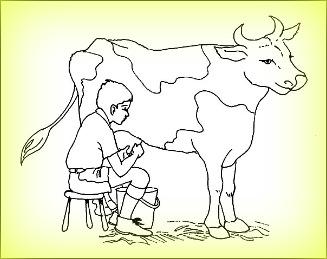 One day Mrs. Papp was busy in the farmhouse and asked me to take a pail to the hen house and collect the eggs. The pail was almost full when I noticed a cracked egg in a nest. "Mrs. Papp," I yelled from the hen house, "One of the eggs is cracked." She shouted back, "Separate it from the others." I put that egg in my jacket pocket and, back at the farmhouse, I found a scrambled egg in my pocket. That never happened again! Mr. Papp played the violin and tried to teach me how to play the child-size violin my parents gave me years earlier. I never could learn to read music scores and made the same squeaking sounds that had forced my violin-playing father to retire my violin. Mr. Papp did, however, teach me something new about pre-dinner appetizers. He went down to his root cellar one day and came back with miniature sweet onions. He peeled one, placed a small piece of homemade bread in his mouth and then added the onion. It was delicious. And the bread somehow absorbed the onion juices leaving us with clean breath! One spring afternoon I returned from school and couldn't find the Papps. I called out to them and heard Mrs. Papp reply, "We're in the greenhouse." She guided me to a big greenhouse I had never seen before. They were tending to new seedlings that would become their summer harvest of corn, squash, beans, tomatoes and other vegetables. Weeks later, Mr. Papp and I loaded his dump truck with dried cow manure from the manure pile and spread it on his planting fields, which he later tilled with his Ford tractor, allowing me to accompany him. In the 1960s I took my three children to visit the Papp farm. Mrs. Papp greeted us with a big smile and insisted we take a bag of vegetables home with us. Later we visited the Putnam Valley Central School and found it had been vastly expanded; there were now about 100 school buses in the parking lot. More recently, I revisited the area again and found the Papp farmhouse gone, replaced by a housing development of about 100 homes. The entire area is now a thriving year-round community. If you visit my Southport home this summer you will find my mini-farm of lettuce, herbs, cucumbers, string beans, beets, tomatoes and eggplants growing and thriving on my deck -- all in waist high planters that make it easier to tend. My tribute to the Papps and my year as a farmer.
|
|
Non Compos Mendes
by Bob Mendes
|
Welcome, Welcome, Welcome to Brian Petrucci and the Dartmouth team, and Congratulations, Congratulations, Congratulations to our Board of Governors and the Property Management Search Committee on their selection. Here's what my most reliable source of information, Bette Mendes, who has been working with Brian for a month, has to say about him: "Brian is diligent, experienced in condo management, well-organized, well-informed and, most important, he is responsive." Most of us are looking forward to major changes in the way Southport is managed.
Dueling Truisms Pick the ones you believe:
- "Out of sight, out of mind." or "Absence makes the heart grow fonder."
- "Too many cooks spoil the broth." or "Many hands make light work."
Here's an Excellent Idea from Bette Mendes and Roy Reiss: Place a box in the Village Center lobby with the label, "FOR RUMORS ONLY."
Random Thoughts
- Is there really any point in candidates debating on TV? I have never seen anyone change his mind about anything, once it was set.
- Flags used to be flown at half-staff infrequently, mostly when a person of note passed away. Now, given the almost incessant gun-related killings, they seem to be at half-staff more often than not.
- If anyone is interested in writing a documentary series about the first five books of the bible, I already have a title for you: Torah, Torah, Torah.
- How many laughs would actually be in a barrel of laughs?
The Book I Stole from My Son, Anything for a Vote, laughs at today's campaigns. Here's an oldie but goodie dealing with the first Clinton.
1812: James Madison vs. DeWitt Clinton High school students throughout the country must have loved this -- the "Non-Intercourse Act." It replaced the Embargo Act and allowed the U.S. to trade with any country in the world except England and France. Clinton represented the peace ticket, but promised that, if elected, he would pursue the war [of 1812], but he would do it far more wisely than Madison. If you've been reading newspapers lately, this may sound familiar. Clinton supporters called Madison, "A base wretch who is for war," trying to pound the drum of popular indignation, but since the war against Great Britain was very popular, the ploy was unsuccessful.
First Person Preposterous Speaking of politics, I've yet to speak out for or against a candidate, but after watching the Republican convention and Trump's speech, I must comment on the fact that I have never heard the vertical pronoun "I" used so often and so arrogantly.
Little Known But True If you eat Oreo cookies in a dark room, with no one watching, they are calorie-free.
My Friend Dick Clarke forwarded these to me; some of them are classics.
- What disease did cured ham have?
- How did we manage to put a man on the moon before we figured out it would be a good idea to put luggage on wheels?
- Why doesn't Tarzan have a beard?
- If corn oil is made from corn and olive oil is made from olives, what is baby oil made from?
- Why does someone believe you when you tell them there are four billion stars, but they check if you tell them the paint is wet?
- Is there ever a time when mattresses are NOT on sale?
- Q. What's the least challenging job in the world? A: Cashier at the Dollar Store.
Good News, Bad News Department The good news is that the Southport water treatment plant is in about the same condition as the Plymouth nuclear facility. The bad news is that the Southport water treatment plant is in about the same condition as the Plymouth nuclear facility.
|
|
Out & About at Southport
|
|
| |
The Southport Sound, performing music from "Hello Dolly" for the residents of Bridges.
That's Dolly in the boa, AKA Judy Bergh.
|
|
| |
Bar Room 8-Ball, Division A
Champion Ernie Ruber (right) and runner-up George Harris. Photo: Barbara Brink
|
|
|
| |
Bar Room 8 Ball, Division B
Champion Gloria Adler and runner-up
Chuck Warry. Photo: Barbara Brink
|
|
|
| |
Hot Tub Ladies (l-r): Muffy Richards, Mary Berg, Betsy Lord, Mary Beth Roddy & Irene Coates. Photo: Bob Fulton
|
|
| |
At the Pool 1. Photo: Larry Cron
|
|
|
| |
At the Pool 2. Photo: Larry Cron
|
|
|
| |
Southport T-Shirt models Mike & Karen Smith. Order your T-shirt in the Information Room. Photo: Andy Jablon
|
|
|
| |
T-Shirt back, showing Southport activities. Designed by Larry Cron, Karen Smith, and Andy Jablon. Photo: Andy Jablon
|
|
|
| |
Collages by Southport Artists Group
|
|
|
| |
Collages by Southport Artists Group
|
|
|
| |
Quilters showing pillowcases created for service men and women stationed overseas.
Photo: Bonnie Towle
|
|
| |
"Whole lotta shakin' goin' on." Photo: Andy Jablon
|
Wimbledon at SouthPort
|
| |
Tier 2 Men's Winners:
Frank Horvitz & Roy Reiss.
Photo: Carol Fredian
|
|
|
| |
Tier 1 Women's Winners:
Ellen Bolton & Carol Fredian.
Photo: Tom Fredian
|
|
|
| |
Tier 2 Women's winners:
Nancy Names & Pat Glennon (left) and runners-up Tracy Tebbutt & Bobby King. Photo: Elinor Saltz
|
|
|
| |
Tier 1 Men's winners:
George Laliberte & John Brazier
Photo: Tom Fredian
|
|
|
|
LOCAL HISTORY
Developer Aims to Build a Downtown
Mashpee Complex Will Have Streets, Library, Church
|
Andy Jablon has been poking around in the Boston Globe Archives,
looking for articles about the history of Mashpee. He has found a number of interesting items and we'll include them in future issues of Southport Village Voices, starting with this one, published on June 27, 1987.
MASHPEE This old Cape Cod community, once an Indian reservation, never has had the kind of traditional downtown that other Cape towns do. But now a private developer plans to change that by erecting his own version of a town center.
The new 38-acre version of a downtown, rising at the intersection of routes 28 and 151, will have a main street, a post office, theater complex, church, professional offices, library and a bank or two. Main Street in Mashpee Commons will be about three blocks long. And the first phase of housing there -- an important element in any downtown -- will be 24 subsidized units for the elderly.
Mashpee Commons has become a labor of love for a young developer, Arnold B. Chace Jr., president of Fields Point Corp. The development is planned as an extension of the existing 12-acre New Seabury Shopping Center, built in the 1960s, which features a supermarket and a movie theater. Existing retail shops are still open despite a number of construction projects around them. The center is being renovated. Plans are to have the stores, restaurants and service shops shift their focus to the new main street and side streets.
"Our attitude at first was that we had a shopping center that we can just renovate. But the more we thought about it, that direction did not appeal to us," said Chace. "We then decided, after a lot of study and discussions with the town: Why not try to make this area into a mixed-use center, with new roadways and a street grid pattern, something more analogous to a downtown than merely having a shopping center."
The Chace name is well known on the Cape. His family can be traced back there, said Chace, to the 17th century. The family owns large tracts abutting the existing shopping center. "Since we have owned the land a long time, there is no meter ticking on the project, so we can afford to go slow and hopefully get the best plan," said Chace, who hopes to add housing to the abutting land.
Chace has recruited Douglas Storrs, a town planner, as his vice president to help him through the complicated process and to work with town officials, who have been tough but very cooperative, he said, "since they want to see something good happen here as we do."
Like most New England communities, the new complex will have a town common, this one occupying a hill at one end of Main Street.
Land on one side of the common has been deeded to the Fall River Catholic Archdiocese, which is planning a $4.5 million church complex. The complex will consolidate two existing chapels, Queen of All Saints Chapel in Mashpee and St. Jude's Chapel in Cotuit.
The new church complex will include a 45,000-square-foot parish center anchored by 1,200-seat Christ the King Church. There will be a 150-foot chapel, a 12-classroom educational facility with office and library space, a parish hall that can accommodate 800 and a rectory. Michael Robinson of Holmes and Edward Architects of Boston is the architect.
Field Point also has deeded to the town a 2.5-acre site for $1 on another side of the common where the town will build a library designed by Gafney Associates of Hyannis. The developers plan a 30-room bed-and-breakfast inn on the third side.
The developers have donated land near the common for a fire station and for the housing for the elderly, which the town will build under a state housing grant. Chace said Mashpee is now looking at a number of sites for a new town hall, and he has asked the town to consider two sites in his project.
Two curved, two-story commercial buildings are nearing completion. Both were designed by Ellenzweig Moore and Associates of Cambridge. There will be offices above and retail below. One of the brick buildings, adorned with a clock tower, will house a branch of Sentry Federal Savings Bank.
A post office has been part of the old shopping center, but it will have a larger home in a new wood-frame building designed by Anthony E. Ferragamo of East Sandwich, who also is designing the elderly housing. A plaza and stores will flank the post office entrance. A six-screen theater will be built.
The existing shopping center has about 74,000 square feet of space, "40 percent of which is going through some form of renovation, and we are adding the three new commercial buildings, which will be finished by the middle of next month and which will have just under 30,000 square feet of new ground - floor retail space." Godino & Co. of Newton has been named leasing agent.
Boston Globe (pre-1997 Fulltext)
Author: Yudis, Anthony J
Date: June 21, 1987
Start Page: A.22
Section: Real Estate
|
|
Street Micrometer,The Ruler of Us All?
by Ernest Ruber
|
|
Every time I cross Pebble Beach Road
And my eye is drawn to the white
(sort of)
Pedestrian lines (sort of)
(they traverse it like railroad ties),
I am drawn into my microscope tube.
Sucked in, as I slide onto my slide micrometer.
Each line representing a millimeter
Of which there are 25.4 to the inch
(Approximately).
And there I trudge in micro scale
Wearily, from millimeter to centimeter.
Never getting off the scale.
I am the size of a bacterium,
about one micrometer.
A thousand of these for each millimeter.
So it's slow going.
And this slide
As I trudge in boredom, draws me (inexorably and transfomationally)
into our everyday ruler,
all 12 inches of it.
How did this slab of wood become the ruler of our lives?
Just because a man's foot is (about)
that long?
How could a foot be otherwise?
A foot is a foot is a foot.
Is that all there is to it?
Could a yard stick be our ruler?
A teacher could brandish it effectively.
Or a meter stick?
Effectively the same for pupil control use.
(39.36 inches make a meter)
A little better reach into the class.
But then why not a fathom stick?
(6 feet to the fathom)
But that's not too hard to fathom,
(Oy!)
Possible, but hard to carry onto a bus,
Worse yet an Imperial fathom (12 feet):
"Sorry pal, you can't get on the bus
with that thing."
Like all those Royalist notions,
Really too cumbersome.
|
Why not these nice little 6 inch plastic jobs?
(but mine has 7 inches)
Are they really real rulers at all?
They have no heft, no gravitas.
But they are convenient to the pocket.
(if you remember to take them)
And how about the slide rule (now extinct):
Is it a real ruler at all?
After all it is full of rules for computations.
Very useful if you can remember
how to deploy it.
Drawback: Cannot well chastise a student with it.
(why pocket calculators were invented?)
Still, maybe it should be deemed the really, really real ruler of us all.
But being extinct (like the Dodo) it may be too late for the slide rule.
(But not for the Dodo if the Jurassic Park people have their way)
Visualize a Dodo stomping across Tokyo!
But then most other rulers are
now extinct too.
Well you can see where idle thought can lead you.
You get zany, manic, maybe sometimes in a panic.
Better to find something constructive to do:
Memorize the next 12 people you meet:
That is, their names and faces.
(recommend Dominick O'Brien's book)
But I'll cross that road the next time
I reach the intersection.
If I ever reach the end of this one.
March 2016
|
|
|
Contributors
to the August 2016 Edition of
Southport Village Voices
|
Sheila Handler 
is a retired high school teacher of advanced placement Spanish literature. She was also a bilingual puppeteer and artist-in-residence for the New Jersey State Council on the Arts, helping to integrate schools in the 1970s. Sheila is the author of four collections of poetry: Poems of a Haunted Child, A Poet's Journey Towards September 11, Falling into the Sky, and Poems from Earth and Wind. She and her husband Les, married 55 years, moved to Mashpee from Provincetown last year. They are the parents of two children and have four grandchildren. Sheila hopes that the newly formed Southport Poets and Writers Group will attract many interested participants.
Andy Jablon 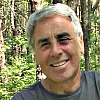
owns a television production company in Watertown that provides crews to shoot stories in New England for the major TV networks. As producer, he interviews all sorts of interesting people on a regular basis. His wife Tracy Tebbutt works at a cancer pharmaceutical company in Cambridge. Since July 2014, they split their time between Southport and Boston, depending on work schedules. Both are enthusiastic cyclists, riding along the Charles River to work in almost all kinds of weather. At Southport, they walk bike, play tennis and soak in the hot tub.
 David Kapp David Kappwith his wife Billie, moved from Connecticut to Southport in 2009. David retired from a career as a university library administrator, after working in the libraries at Brandeis, Harvard and the University of Connecticut. He was a building consultant for the planning of a number of major university libraries and was, for many years the editor of Connecticut Libraries. Billie enjoyed a career as an educator and social sciences consultant. The Kapps are frequent visitors to Hawaii where their son and other family members live. Their daughter and grandson live in Mashpee.
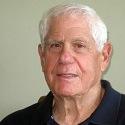 Bob Mendes Bob Mendesbegan his career as an advertising copywriter at Doyle Dane Bernbach in NYC before becoming senior vice president of marketing for a west coast department store chain. He left that position to start Pacific Sports, a sports and general marketing agency. There he developed "The Reading Team," a children's literacy program sponsored by the NFL and the American Library Association, using NFL players as literacy role models. Bob is the author of "A Twentieth Century Odyssey, the Bob Mathias Story." After retiring, he served as executive director of the Glendora, CA Chamber of Commerce. When grandson Adam was born, Bob and Bette moved to Cape Cod. He's had a number of part-time jobs, has written two more books, and volunteers. Bette serves on the Board of Governors and volunteers at the Falmouth Jewish Congregation. Their son Steve, a pediatrician, lives in Marion with his wife Sarah and their children; a second son, Jeff, practices law in Indianapolis.
Ernest Ruber 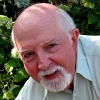
and his wife of 55 years, Natalie, came to Southport in 2002 and enjoyed their life together here until her death in early 2011. Ernie retired from Northeastern University where he was Professor of Biology and Ecology. He designed and recently revised the interpretive nature trail at Southport and has written many nature/science articles for Southport Village Voices. He reports for Southport News on pool tournaments, in which he usually plays and frequently wins. Ernie has two adult children and a grandchild.
Ray Schumack 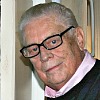
has been a magazine editor, publicity director and an account executive for a Madison Avenue advertising and public relations agency. He served for 15 years as chief communications officer for a Fortune 500 company, responsible for all corporate communications and product promotion literature. His business articles have appeared in the Wall Street Journal, the New York Times, Fortune magazine and elsewhere. He established his own public relations firm and continues to serve several clients in retirement. His recent memoir, News Releases from the Korean War, recounts his experiences as a war correspondent for Stars & Stripes.
Special Thanks To
Alan & Denise Judelson for their interview & pictures,
Roy Reiss for his interview,
the many photographers who submitted pictures,
and to my proofreader Billie Kapp
|
|
|
|
|
|
|
|